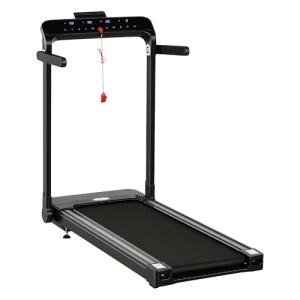The Reasons Energy-Saving Electric Treadmills Is Harder Than You Imagine
Energy-Saving Electric Treadmills: A Greener Approach to Home Fitness
In a period where ecological awareness is a growing concern and fitness is critical for total health, the emergence of energy-saving electric treadmills merges these 2 vital elements efficiently. Standard electric treadmills consume substantial quantities of electricity, contributing to higher energy bills and increased carbon footprints. Nevertheless, advancements in technology have led to the development of energy-efficient models that not only help users conserve on their power consumption but likewise promote a sustainable way of life.
Comprehending Energy-Saving Electric Treadmills
Energy-saving electric treadmills are designed with features that minimize electrical energy usage while delivering a reliable exercise experience. Unlike conventional treadmills that run exclusively on electrical power, energy-saving models employ different innovations to boost energy effectiveness without compromising efficiency.
Functions of Energy-Saving Treadmills
Smart Motor Technology: Many energy-efficient treadmills utilize DC motors that change their power output based on the user's speed and weight. Highly recommended Resource site supply just enough energy for optimal performance, which results in lower electrical power use.
Regenerative Braking Systems: Some advanced designs incorporate regenerative braking technology, permitting the treadmill to record energy during the running phase and return it to the grid or utilize it to power the maker's electronic devices.
Manual Options: Several energy-saving models feature the choice to run manually, enabling users to take part in workout without any power usage, particularly helpful throughout power interruptions or in eco-conscious families.
Energy Display Features: Many modern treadmills are geared up with energy tracking systems that offer real-time feedback on energy usage. This function empowers users to track their energy usage and adjust their exercise strength accordingly.
Compact and Lightweight Design: Many designs are designed to use up less area and are much easier to keep. Lightweight styles are typically simpler to move and transfer, which saves energy in terms of transportation and use.
The Benefits of Choosing an Energy-Saving Electric Treadmill
Purchasing an energy-saving electric treadmill uses several benefits that can interest various people, from budget-conscious consumers to environmentally-minded physical fitness lovers.
Ecological Benefits
Minimized Carbon Footprint: By selecting a more energy-efficient treadmill, users add to a decline in energy consumption, which eventually results in decrease greenhouse gas emissions associated with power generation.
Sustainable Lifestyle: Enhanced awareness of sustainable fitness alternatives assists to instill ecological awareness in users, influencing them to embrace more environmentally friendly routines beyond their workout regimen.
Economic Benefits
Energy Bill Savings: Energy-saving treadmills consume less electrical energy, which can lead to significant savings on monthly utility bills.
Long-Term Investment: While the initial purchase rate of an energy-efficient design might be somewhat greater, the decrease in running costs makes it a better long-lasting investment.
Health Benefits
Support to Exercise: With the modern and efficient design of energy-saving treadmills, users are most likely to engage in regular physical activity, leading to much better health results.
User Comfort: Enhanced features like adjustable incline and cushioned running surfaces in many energy-saving models can improve the exercise experience, making it more enjoyable and less difficult on the joints.
How to Choose the Right Energy-Saving Electric Treadmill
Picking the perfect energy-saving electric treadmill involves thinking about several aspects. Here are some features and requirements to evaluate before making a purchase:
Motor Power and Efficiency: Check the specs concerning the motor's power usage and efficiency ranking. Try to find models with a DC motor or those with regenerative capabilities.
Program Features: Look for treadmills that offer various exercise programs and personalization alternatives for intensity and speed, allowing you to tailor your workout program.
Size and Portability: Consider your offered space at home. If your living area is limited, decide for a model that is compact and easy to store.
Budget: Set a clear budget. While energy-saving models may have a higher upfront cost, examine them based on long-lasting savings on electrical power bills.
Warranty and Customer Support: Check the service warranty duration and accessibility of client service. A longer service warranty often shows a manufacturer's self-confidence in the product.
Frequently Asked Question About Energy-Saving Electric Treadmills
1. Are energy-saving electric treadmills significantly more costly than traditional ones?
While energy-saving treadmills can have a higher upfront cost, they typically save users cash on electricity bills in the long run. Therefore, they can be considered a rewarding investment.
2. Can I utilize an energy-saving treadmill without electrical power?
Numerous energy-saving designs include manual modes that permit operation without electrical energy. Nevertheless, totally electric performances, such as configured exercises, will need a source of power.
3. Just how much electrical energy can I conserve with an energy-saving treadmill?
The quantity of electrical energy conserved can differ depending upon use habits, but energy-saving designs can lower power consumption by 30-50% compared to conventional treadmills.
4. What is the typical life expectancy of an energy-efficient treadmill?
The majority of quality electric treadmills, when appropriately kept, can last for 10-15 years, comparable to conventional designs.
5. Do energy-saving treadmills provide the very same exercise quality as regular treadmills?
Yes, energy-saving treadmills are designed to supply comparable, if not much better, exercise quality due to their advanced functions and innovations.
As society ends up being significantly familiar with the significance of sustainability, energy-saving electric treadmills emerge as a helpful option for those seeking to improve their physical fitness regime while bearing in mind their energy usage. Through advanced innovations and smart design, these treadmills use users a way to engage in routine workout that helps lower their carbon footprint, conserve resources, and conserve money. Purchasing an energy-efficient treadmill not just promotes individual health and well-being but also contributes favorably to the planet's health. As you consider your physical fitness journey, believe about methods to integrate sustainability into your regimen, beginning with your home exercise equipment.
